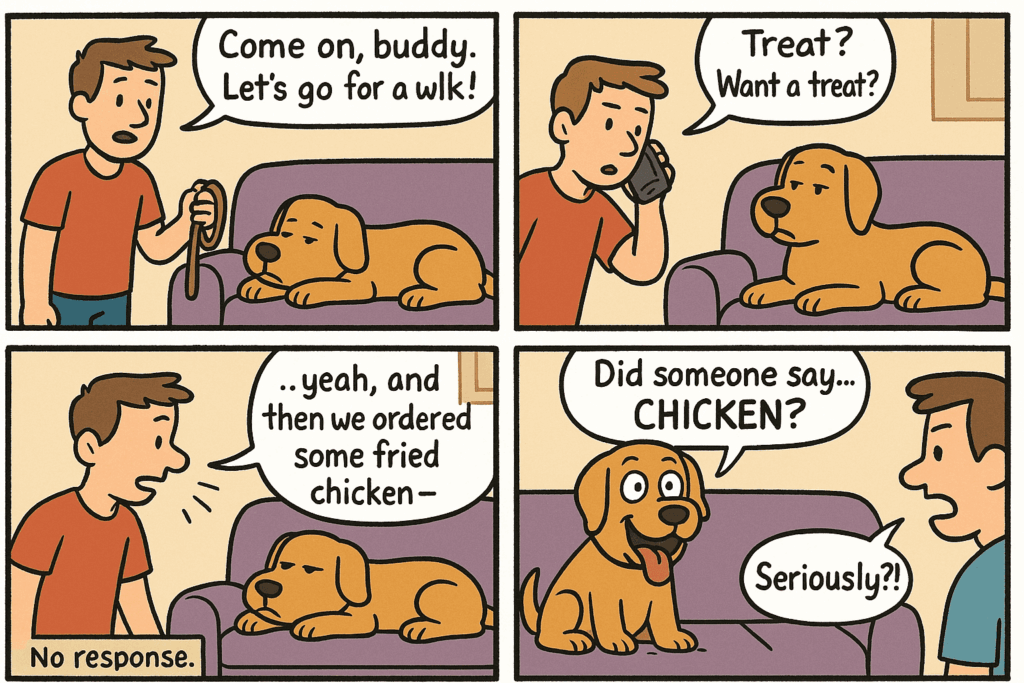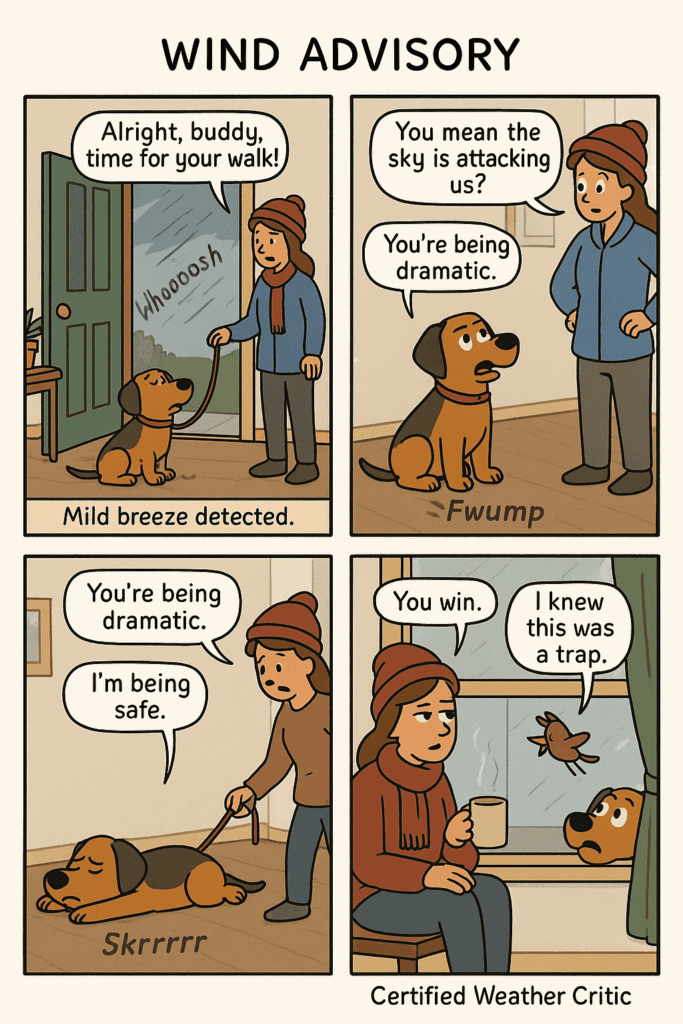Whether you’re an artist, storyteller, or just someone with a funny idea in your head, ChatGPT is an amazing creative partner for making comic strips, whether you’re writing them from scratch or rendering them from a rough idea.
In this guide, we’ll explore two main use cases:
- ✍️ Case 1: You already have a script and characters, you just want ChatGPT to help you turn it into a comic strip image.
- 💡 Case 2: You only have a rough idea and you want ChatGPT to help you build everything from the ground up.
We’ll also walk through:
- What info is needed to generate a script
- How to create a series with recurring characters
- How to edit and modify existing strips
Let’s dive in 👇
✍️ Case 1: You Already Have Everything (Script, Characters, and Concept)
If you already know:
- The story or scene
- Who says what
- The tone and setting
Then you can use ChatGPT to turn it into a formatted panel-by-panel comic.
✅ Step 1: Paste Your Full Script
Write out your dialogue in a screenplay-like format with character names. For example:
![How to Create Comic Strips with ChatGPT [Prompt]](https://cdn.7labs.io/wp-content/uploads/2025/04/How-to-Create-Comic-Strips-with-ChatGPT-Prompt-683x1024.png)
🎯 Example Script Prompt:
1Title: Selective Hearing
2Characters:
3 – Tucker: A lazy dog with attitude
4– Jenny: His relatable, slightly frustrated owner
5Setting: Living room and kitchen
6Tone: Funny, light, realistic
7
8Script:
9
10Jenny: (vacuuming) “Tucker, can you move so I can vacuum?”
11Tucker: (lying on the couch, ignoring) [No response.]
12 Jenny: (getting closer) “Tucker. I said move.”
13Tucker (thinking): “If I don’t look at her, she’s not talking to me.”
14Jenny: (muttering as she walks away) “Fine. I’ll just grab some leftover chicken...”
15Tucker: [Suddenly alert] “CHICKEN?!”
16Jenny: (holding Tupperware, staring) “So you can hear.”
17Tucker: “Only when it’s important.” ✅ Step 2: Ask ChatGPT to Format It
Now give this instruction:
1Format this script into a 4-panel comic strip with:
2– A short visual description for each panel
3– Dialogue for each character
4– Any relevant captions or SFX 💬 ChatGPT Will Return Something Like:
Panel 1
Visual: Jenny is vacuuming the living room. Tucker is flopped on the couch, eyes half-closed.
Jenny: “Tucker, can you move so I can vacuum?”
Tucker: …
SFX: Vrrrrrrr
Caption: Zero interest detected.
Panel 2
Visual: Jenny stands closer, one hand on her hip. Tucker still hasn’t moved.
Jenny: “Tucker. I said move.”
Tucker (thinking): “If I don’t look at her, she’s not talking to me.”
SFX: Tap tap (vacuum nudging couch)
Panel 3
Visual: Jenny walks away toward the kitchen.
Jenny (muttering): “Fine. I’ll just grab some leftover chicken…”
Tucker: “CHICKEN?!”
SFX: POP! (Tucker launches off the couch)
Panel 4
Visual: Tucker sits perfectly in the kitchen, tail wagging. Jenny holds a Tupperware, unimpressed.
Jenny: “So you can hear.”
Tucker: “Only when it’s important.”
Caption: Priorities: 10/10.
✏️ Want to Tweak Something?
You can ask ChatGPT to:
- Modify dialogue in any panel
- Change pacing (add or combine panels)
- Update tone (make it more sarcastic, kid-friendly, etc.)
- Adjust visuals or captions
Example: “Can you rewrite panel 4 with a funnier punchline?”
ChatGPT can update individual panels, adjust tone, or suggest alt endings, no need to rewrite the whole thing.
You can also ask:
Give me 3 different punchline options for the final panel.
Make the script more suitable for kids.
Add a caption to each panel for Instagram posts.
Once you’re happy with the result, just say:
👉 “Generate” and ChatGPT can help create image prompts to render your comic visually using DALL·E or other tools.
💡 Case 2: You Only Have a Rough Idea
If all you have is a concept like:
“I want to make a comic where a dog only listens when he hears the word ‘chicken.’”
ChatGPT can help build everything from scratch.
✅ Step 1: Share Your Idea
Just describe the basic concept, tone, and maybe the characters you’re imagining.
“A lazy dog with selective hearing, only reacts to the word ‘chicken.’ I want a 4-panel comic, funny tone, set in a home.”

✅ Step 2: Let ChatGPT Fill in the Gaps
ChatGPT will generate:
- Character names + personality
- Dialogue and narration
- Visual panel descriptions
- Captions + sound effects
You can then refine it just like in Case 1, until you’re ready to generate images.
🧠 What Info Do You Need to Create a Comic Script?
The more you provide, the better the comic! Here’s a checklist:
| Element | Description | Example |
| Genre | Humor, drama, sci-fi, slice of life | Humor |
| Characters | Names + personality traits | Tucker (lazy dog), Jenny (relatable human) |
| Setting | Where it takes place | Living room, kitchen |
| Tone | Playful, sarcastic, heartwarming | Light and funny |
| Theme | Core idea or twist | Dog has selective hearing |
| Panel count | Number of scenes | 3–6 |
With this, ChatGPT can craft a strong script in your desired style.
🔁 Creating a Series with the Same Characters
Once you have a great comic character, you can easily build more stories around them!
Just let ChatGPT know:
Continue the comic series with Tucker and Jenny. This time, Tucker thinks the mailman is a spy.
You can even create:
- Recurring jokes (like Tucker’s love for chicken)
- Mini-arcs (Tucker gets a cat roommate!)
- Seasonal episodes (Tucker’s Halloween costume saga)
You can store your character descriptions and tone as a template so ChatGPT always writes in the same style.
💾 How to Save Your Character Profiles and Comic Style (For Future Strips)
Once you’ve developed characters you love — like Tucker and Jenny — you’ll probably want to create more strips in the same style without starting from scratch each time.
Here are three simple ways to do that:
✅ 1. Create a Reusable Prompt Template
Write out your comic series info once, and copy-paste it into ChatGPT whenever you want to create a new episode.
Example Template:
1Comic Series: Tucker & Jenny
2
3Tone: Light, relatable, funny
4
5Genre: Humor / Slice of Life
6
7Setting: Home – living room, kitchen, backyard
8
9Characters:
10
11– Tucker: A lazy Shiba Inu. Sarcastic, dramatic, obsessed with chicken. Often acts like a grumpy human.
12
13– Jenny: His owner. Patient, kind, but easily exasperated. Treats Tucker like a roommate more than a pet.
14
15Format: 3–6 panel comic strips
16
17Include: Visual descriptions, character dialogue, SFX or captions when needed.Continue the series based on this style and tone. New episode idea:
Whenever you have a new idea, just paste the template and finish with your episode prompt:
New episode idea: Tucker refuses to go outside because it’s too windy.

✅ 2. Use ChatGPT’s Custom Instructions
In the ChatGPT app or web version:
- Go to Settings → Personalization → Custom Instructions
- Under “How would you like ChatGPT to respond?” write something like:
“In a light and humorous tone. I’m working on a comic series featuring a lazy, sarcastic dog (Tucker) and his human (Jenny). I often write 4-panel strips set in their house.”
This helps ChatGPT automatically match your tone and characters — even in new chats.
✅ 3. Stick to One Chat Thread for Your Series
Another simple option: keep using the same conversation thread to write new strips. That way, ChatGPT remembers the tone, past episodes, and recurring jokes — like Tucker’s obsession with chicken — as long as the chat stays active.
Tip: You can rename the chat something like “🐾 Tucker Comic Series” to keep it organized.
🧠 Bonus Tip: Build a Comic Bible
As your series grows, you can even ask ChatGPT to:
- Summarize your recurring characters and themes
- Track inside jokes or running gags
- Suggest seasonal strips (like Halloween, New Year, etc.)
- Help you plan out 10-episode arcs or post schedules
This turns ChatGPT into your creative assistant and continuity editor.
🚀 Ready to Create Your Comic?
Whether you’re just toying with a funny idea or you’re building your own webcomic series, ChatGPT can help with:
- Storyboarding
- Writing punchlines
- Formatting scripts
- Generating images
- Editing & expanding ideas
So the next time a silly comic concept pops into your head, toss it into ChatGPT. You’ll have a full comic strip in minutes.